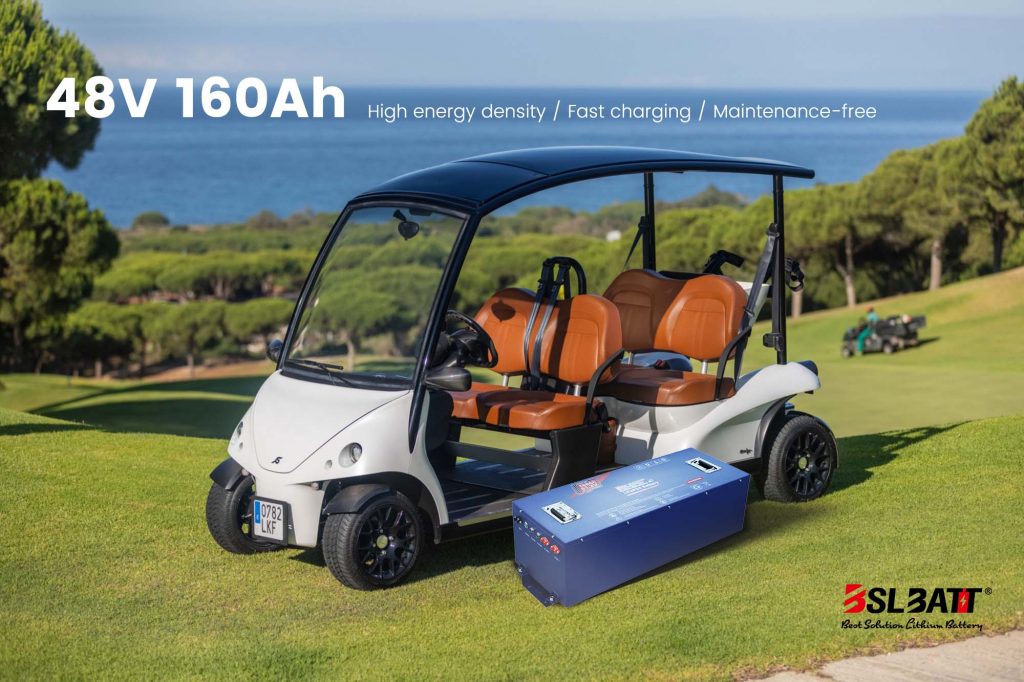Industry Application
Product Type
Lithium Battery Overview | BSLBATT Renewable Energy

BSLBATT Engineered Technologies utilizes our experienced Engineering, Design, Quality and Manufacturing teams so that our customers can be assured of technically advanced battery solutions that meet the unique requirements of their specific applications. We specialize in rechargeable and non-rechargeable lithium cell and battery pack design as work with a variety of lithium cell chemistries to offer options and solutions for demanding applications worldwide. Lithium Battery Pack Technologies Our broad manufacturing capabilities enable us to build the most basic battery packs, to custom packs with specialized circuitry, connectors, and housings. From low to high volume, we have the capability and industry expertise to meet the unique needs of all OEM’s as our experienced engineering team can design, develop, test and manufacture custom battery solutions for the specific needs of most applications. BSLBATT offers turnkey solutions based on customer requirements and specifications. We partner with the industry-leading cell manufacturers to provide the optimum solutions and we develop and integrate the most sophisticated control and monitoring electronics into its battery packs. How Does a Lithium-Ion Battery Work? Lithium-ion batteries capitalize on the strong reducing potential of lithium ions to power the redox reaction central to all battery technologies — reduction at the cathode, oxidation at the anode. Connecting the positive and negative terminals of a battery through a circuit, unites the two halves of the redox reaction, allowing the device attached to the circuit to extract energy from the movement of electrons. While there are many different types of lithium-based chemistries used in the industry today, we’ll use Lithium Cobalt Oxide(LiCoO2) — the chemistry that allowed lithium-ion batteries to replace the nickel-cadmium batteries that had been the norm for consumer electronics up until the 90s — to demonstrate the basic chemistry behind this popular technology. The full reaction for a LiCoO2 cathode and a graphite anode is as follows: LiCoO2 + C ⇌ Li1-xCoO2 + LixC Where the forward reaction represents charging, and the reverse reaction represents discharging. This can be broken up into the following half-reactions: At the positive electrode, reduction at the cathode occurs during discharge (see reverse reaction). LiCo3+O2 ⇌ xLi+ + Li1-xCo4+xCo3+1-xO2 + e- At the negative electrode, oxidation at the anode occurs during discharge (see reverse reaction). C + xLi+ + e- ⇌ LixC During discharge, lithium ions (Li+) move from the negative electrode (graphite) through the electrolyte (lithium salts suspended in a solution) and the separator to the positive electrode (LiCoO2). At the same time, electrons move from the anode (graphite) to the cathode (LiCoO2) which is connected via an external circuit. If an external power source is applied, the reaction is reversed along with the roles of the respective electrodes, charging the cell. What’s in a Lithium-Ion Battery Your typical cylindrical 18650 cell, which is the common form factor used by the industry for commercial applications from laptops to electric vehicles, has an OCV (open circuit voltage) of 3.7 volts. Depending on the manufacturer it can deliver around 20 amps with a capacity of 3000mAh or more. The battery pack will be composed of multiple cells, and generally include a protective microchip to prevent overcharging and discharging below the minimum capacity, which can both lead to overheating, fires, and explosions. Let’s take a closer look at the internals of a cell. Positive Electrode/Cathode The key to designing a positive electrode is to pick a material that has an electro potential greater than 2.25V when compared with pure lithium metals. Cathode materials in lithium-ion vary greatly, but they have generally layered lithium transition metal oxides, like the LiCoO2 cathode design we explored earlier. Other materials include spinels (i.e. LiMn2O4) and olivines (i.e. LiFePO4). Negative Electrode/Anode In an ideal lithium battery, you would use pure lithium metal as an anode, because it provides the optimum combination of low molecular weight and high specific capacity possible for a battery. There are two main problems that prevent lithium from being used as an anode in commercial applications: safety and reversibility. Lithium is highly reactive and prone to catastrophic failure modes of the pyrotechnic kind. Also during charge, lithium will not plate back into its original uniform metallic state, instead of adopting a needle-like morphology known as a dendrite. Dendrite formation can lead to punctured separators which can lead to shorts. The solution researchers devised to harness the pros of lithium metal without all the cons was lithium intercalation — the process of layering lithium ions within carbon graphite or some other material, to allow the easy movement of lithium ions from one electrode to another. Other mechanisms involve using anode materials with lithium that make reversible reactions more possible. Typical anode materials include graphite, silicon-based alloys, tin, and titanium. Separator The role of the separator is to provide a layer of electrical insulation between the negative and positive electrodes, while still allowing ions to travel through it during charge and discharge. It must also be chemically resistant to degradation by the electrolyte and other species in the cell and mechanically strong enough to resist wear and tear. Common lithium-ion separators are generally highly porous in nature and consist of polyethylene (PE) or polypropylene (PP) sheets. Electrolyte The role of an electrolyte in a lithium-ion cell is to provide a medium through which lithium ions can freely flow between the cathode and anode during charge and discharge cycles. The idea is to pick a medium that is both a good Li+ conductor and an electronic insulator. The electrolyte should be thermally stable, and chemically compatible with the other components in the cell. Generally, lithium salts like LiClO4, LiBF4, or LiPF6 suspended in an organic solvent like diethyl carbonate, ethylene carbonate, or dimethyl carbonate serve as the electrolyte for conventional lithium-ion designs. Solid Electrolyte Interphase (SEI) An important design concept to understand about lithium-ion cells is the solid electrolyte interphase (SEI) — a passivation film that builds up at the interface between the electrode and the electrolyte as Li+ ions react with degradation products of the electrolyte. The film forms on the negative electrode during the initial charge of the cell. The SEI protects the electrolyte from further decomposition during subsequent charges of the cell. Loss of this passivating layer can adversely impact cycle life, electrical performance, capacity, and the overall life of a cell. On the flip side, manufacturers have found that they can improve battery performance by fine-tuning the SEI. Meet the Lithium-Ion Battery Family The allure of lithium as an ideal electrode material for battery applications has led to many kinds of lithium-ion batteries. Here are five of the most common commercially available batteries on the market. Lithium Cobalt Oxide We’ve already covered LiCoO2 batteries in-depth in this article because it represents the most popular chemistry for portable electronics like cellphones, laptops, and electronic cameras. LiCoO2 owes its success to its high specific energy. A short lifespan, poor thermal stability, and the price of cobalt have manufacturers to switch to blended cathode designs. Lithium Manganese Oxide Lithium manganese oxide batteries (LiMn2O4) use MnO2 based cathodes. Compared with standard LiCoO2 batteries, LiMn2O4 batteries are less toxic, cost less, and are safer to use, but with reduced capacity. While rechargeable designs have been explored in the past, today’s industry typically uses this chemistry for primary (single cycle) cells which are non-rechargeable and meant to be disposed of after use. Durable, high thermal stability and a long shelf-life make them great for power tools or medical devices. Lithium Nickel Manganese Cobalt Oxide Sometimes the whole is greater than the sum of its parts, and lithium nickel manganese cobalt oxide batteries (also known as NCM batteries) boast greater electrical performance than LiCoO2. NCM gains its strength in balancing the pros and cons of its individual cathode materials. One of the most successful lithium-ion systems on the market, NCM is widely used in powertrains like power tools and e-bikes. Lithium Iron Phosphate (LiFePO4) batteries achieve a long cycle life and high current rating with good thermal stability with the help of nanostructured phosphate cathode material. Despite these improvements, it is not as energy-dense as cobalt blended technologies and it has the highest self-discharge rate of the other batteries in this list. LiFePO4 batteries are popular as an alternative to lead-acid as a car starter battery. Lithium Titanate Replacing the graphite anode with lithium titanate nanocrystals greatly increases the surface area of the anode to about 100 m2 per gram. The nanostructured anode increases the number of electrons that can flow through the circuit, giving lithium titanate cells the ability to safely charged and discharged at rates greater than 10C (ten times its rated capacity). The tradeoff for having the fastest charge and discharge cycle of the lithium-ion batteries is a relatively lower voltage 2.4V per cell, lithium titanate cells on the lower end of the energy density spectrum of lithium batteries but still higher than alternative chemistries like nickel-cadmium. Despite this disadvantage, overall electrical performance, high reliability, thermal stability, and an extra-long cycle life mean that the battery still sees use in electric vehicles. The Future of Lithium-Ion Batteries There is a big push from companies and governments across the globe to pursue further research and development on lithium-ion and other battery technologies to meet the growing demand for clean energy and reduced carbon emissions. Inherently intermittent energy sources like solar and wind could benefit greatly from lithium ion’s high energy density and long cycle life which has already helped the technology corner the electric vehicle market. To meet this growing demand, researchers have already begun pushing the boundaries of existing lithium-ion in new and exciting ways. Lithium polymer (Li-Po) cells replace the hazardous liquid lithium salt based electrolytes with safer polymer gels and semi-wet cell designs, for comparable electrical performance with improved safety and lighter weight. Solid-state lithium is the newest technology on the block, promising improvements in energy density, safety, cycle life, and overall longevity with the stability of a solid electrolyte. It’s difficult to predict which technology will win the race for the ultimate energy storage solution, but lithium-ion is certain to continue to play a major role in the energy economy in the years to come. Energy Storage Solutions Provider We manufacture cutting-edge products, combining precision engineering with extensive applications expertise to assist customers in integrating energy storage solutions into their products. BSLBATT Engineered Technologies has the proven technology and integration expertise to bring your applications from conception to commercialization. To learn more, see our blog post on lithium battery storage. |
A Guide to Choosing the Best 48V Lithium Golf Cart Battery
Would it be worth investing in a 48V ...
10 Exciting Ways To Use Your 12V Lithium Batteries
Back in 2016 when BSLBATT first began designing what would become the first drop-in replacemen...
BSLBATT Battery Company Receives Bulk Orders from North American Customers
BSLBATT®, a China Forklift battery manufacturer specializing in the material handling indust...
Fun Find Friday: BSLBATT Battery is coming to another great LogiMAT 2022
MEET US! VETTER’S EXHIBITION YEAR 2022! LogiMAT in Stuttgart: SMART – SUSTAINABLE – SAF...
Looking for new Distributors and Dealers for BSL Lithium Batteries
BSLBATT battery is a fast-paced, high-growth (200% YoY ) hi-tech company that is leading the a...
BSLBATT to Participate at MODEX 2022 on March 28-31 in Atlanta, GA
BSLBATT is one of the largest developers, manufacturers, and integrators of lithium-ion batter...
What makes the BSLBATT the Superior Lithium Battery for your Motive Power needs?
Electric forklift and Floor Cleaning Machines owners who seek the ultimate performance will fi...





























